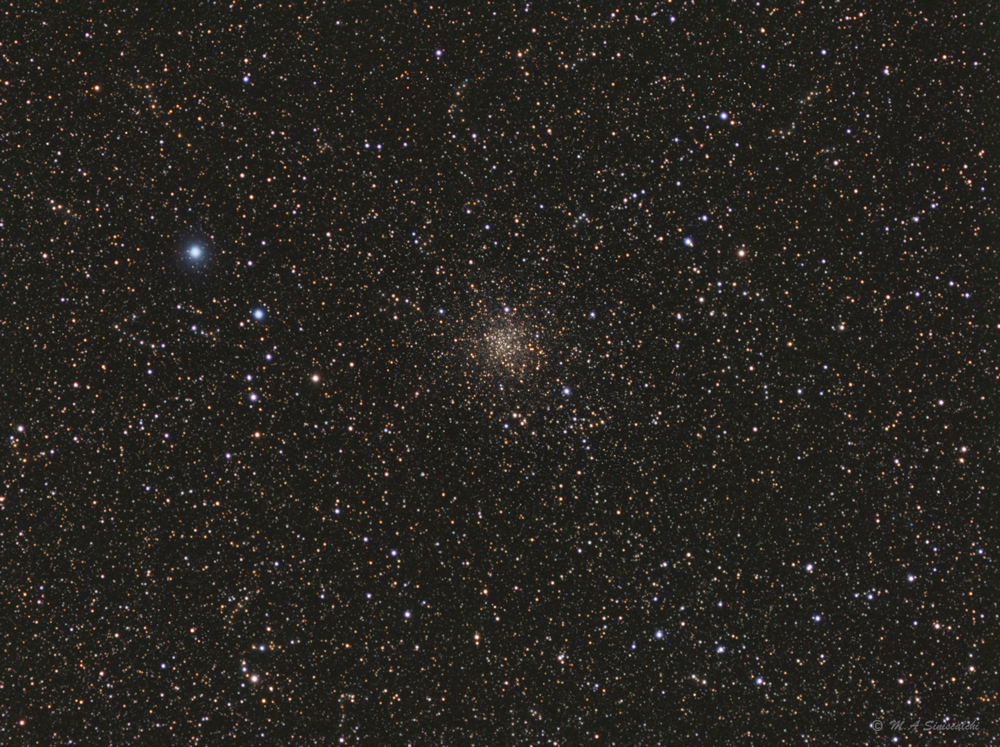© 2022 Michael A. Siniscalchi
Messier 71
Globular Cluster in Sagitta
RA:19h 53m 42s Dec: +18 46' 45" Distance - ~13000 ly Size 7.2'
Wikipedia-
Messier 71 (also known as M71 or NGC 6838) is a globular cluster in the small northern constellation Sagitta. It was discovered by Philippe Loys de Chéseaux in 1745 and included by Charles Messier in his catalog of non-comet-like objects in 1780. It was also noted by Koehler at Dresden around 1775.
This star cluster is about 12,000 light years away from Earth and spans 27 light-years (8 pc). The irregular variable star Z Sagittae is a member.
M71 was for many decades thought (until the 1970s) to be a densely packed open cluster and was classified as such by leading astronomers in the field of star cluster research due to its lacking a dense central compression, and to its stars having more "metals" than is usual for an ancient globular cluster; furthermore, it lacks the RR Lyrae "cluster" variable stars that are common in most globulars. However, modern photometric photometry has detected a short "horizontal branch" in the H-R diagram (chart of temperature versus luminosity) which is characteristic of a globular cluster. The shortness of the branch explains the lack of RR Lyrae variables and is due to the globular's relatively young age of 9–10 billion years. Taking in many or only late series (Population I) stars explains relatively its stars. Hence today M71 is designated as a very loosely concentrated globular cluster, much like M68 in Hydra. M71 has a mass of about 53,000 M? and a luminosity of around 19,000 L?.
Click on image for full size.
Messier 71 position shown relative to our location (Sun) in the Milky Way Galaxy
Age: 426 million years
Galatic Longitude: 56.7
Galatic Latitude: -4.6
Distance from Galatic Plane:983 ly below the galatic plane
Above image and info provided by Our Galaxy 3D Atlas application and used with permission by
Otherwise

